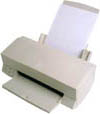The Indirect Object
Recognize an indirect object when you find one.
Indirect objects are rare. You can read for paragraphs before you encounter one. For an indirect object to appear, a sentence must first have a direct object.
Direct objects follow transitive verbs (a type of action verb). If you can identify the subject and verb in a sentence, then finding the direct object—if one exists—is easy.
Just remember this simple formula:
Subject + Verb + what? or who? = Direct Object
Here are examples of the formula in action:
Jim built a sandcastle on the beach.
Jim = subject; built = verb. Jim built what? Sandcastle = direct object.
Sammy and Maria brought Billie Lou to the party.
Sammy, Maria = subjects; brought = verb. Sammy and Maria brought who? Billie Lou = direct object.
To explain the broken lamp, we told a lie.
We = subject; told = verb. We told what? Lie = direct object.
Whoever (or whatever) gets that direct object is the indirect object.
Consider these new versions of the sentences above:
Jim built his granddaughter a sandcastle on the beach.
Jim = subject; built = verb. Jim built what? Sandcastle = direct object. Who got that sandcastle? Granddaughter = indirect object.
So that Darren would have company at the party, Sammy and Maria brought him a blind date.
Sammy, Maria = subjects; brought = verb. Sammy and Maria brought who? Blind date = direct object. Who got that blind date? Him = indirect object.
To explain the broken lamp, we told Mom a lie.
We = subject; told = verb. We told what? Lie = direct object. Who got that lie? Mom = indirect object.
An indirect object will sometimes begin with or .
Occasionally, the indirect object will occur in a prepositional phrase.
Read these two sentences:
Tomas paid the mechanic 200 dollars to fix the squeaky brakes.
Tomas paid 200 dollars to the mechanic to fix the squeaky brakes.
In both versions, the mechanic (indirect object) receives the 200 dollars (direct object).
When the direct object is a pronoun rather than a noun, putting the indirect object in a prepositional phrase often becomes a necessary modification. The preposition smooths out the sentence.
Consider this example:
Leslie did not have enough money for the sandwich, so Smitty purchased her it.
Blech! That version is awful! But now try the sentence with the indirect object after a preposition:
Leslie did not have enough money for the sandwich, so Smitty purchased it for her.
Locating the indirect object her in a prepositional phrase makes the sentence less choppy!
Now read this example:
After Michael helped himself to the stuffing, he passed us it.
Ewww! This version is awful too! But with a quick fix, we can solve the problem:
After Michael helped himself to the stuffing, he passed it to us.
With the indirect object us in a prepositional phrase, we have a smooth sentence!
©1997 - 2025 by Robin
L. Simmons
All Rights Reserved.
